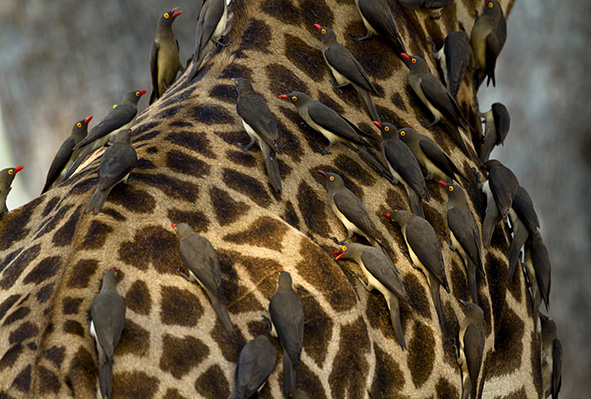Interactions
As herbivores, the Rhodesian giraffe is not a predator
to other animals in the wild. It feeds mainly on leaves, shoots,
and seeds. These giraffes do form relationships with other
animals such zebras, antelopes, and ostriches. The Thornicroft
giraffe can also become a guard to many animals due to its ability to
see danger miles away. It is able to send off a shrill alarm to
warn animals in the area that a predator is near
(Bercovitch et
al., 2010a).
Rhodesian giraffes are commonly found in herds with up to 50
individuals. The closely-knitted groups are made up of females
and their newborns. Males in the herds are often aggressive and
feel threatened by surrounding males. Herd size is not a
coincidence in the case of the Rhodesian giraffe. These animals
tend to travel as a group to avoid predators suchs as lions,
hyenas, leopards, and wild dogs (Bercovitch et al., 2010a).
The main predator to a female giraffe and her young is the
Panthera leo, or commonly known as the lion.
Around half of giraffe calves can be killed each year. Once the
giraffes reach maturity their chances of being killed dec rease
beacause of their height and strength (Tutchings et al., 2013).
rease
beacause of their height and strength (Tutchings et al., 2013).
One major interaction the Rhodesian giraffe has is with the
Red Billed Oxpecker. This bird species climbs on the giraffes, picking
off ticks and
other parasites. This is a form of mutualism because the
giraffe is benefitting by having parasites removed from it and the oxpecker is
receiving food.
Home